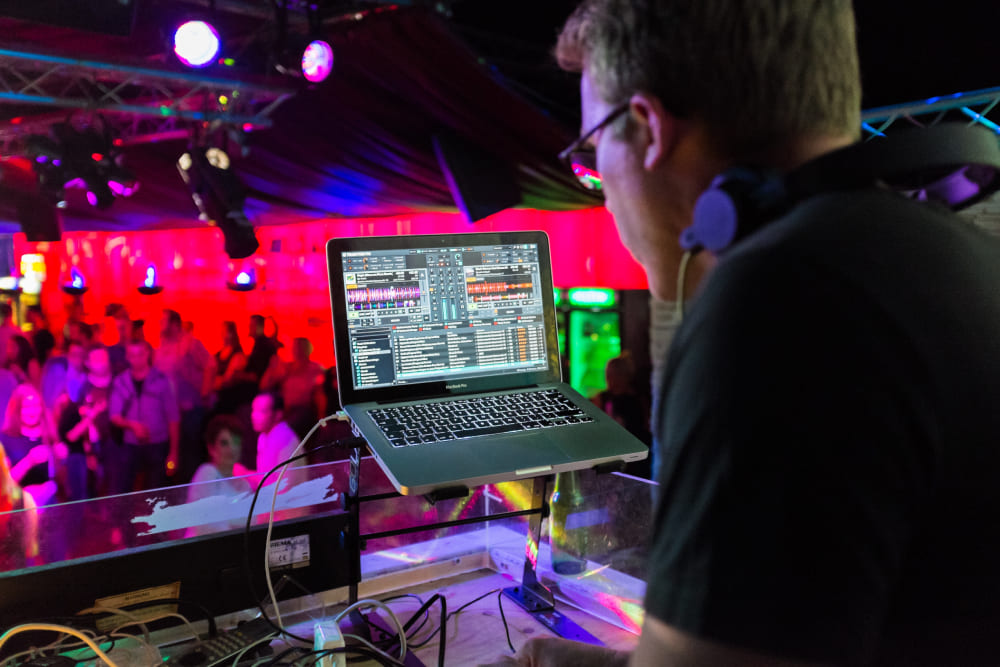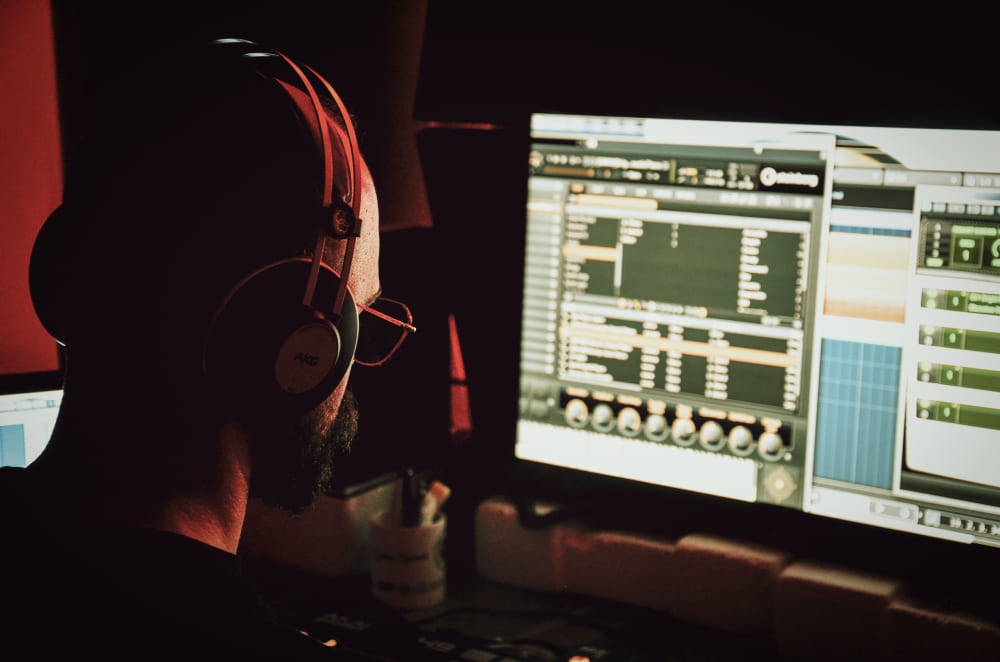Mastering the Art of Music Mixing: A Comprehensive Guide
If you've ever found yourself tapping your foot to a catchy beat or bobbing your head to a mesmerizing melody, you know the power of music. But have you ever wondered how to mix music to create those unforgettable sounds that get stuck in your head?
Whether you're an aspiring DJ or simply a music enthusiast, learning how to mix music can take your love of music to the next level. Mixing music is the art of blending different tracks and sounds together to create a seamless and harmonious composition.
In this article, we'll explore the essential techniques and tips for how to mix music like a pro.

In this article, you will learn:
- What Is Mixing in Music?
- Understanding the Basics of Mixing Audio
- How to Mix Music?
- How to Use Mastering to Polish the Final Mix
What Is Mixing in Music?
Music mixing is the process of taking multiple audio tracks and blending them together to create a cohesive and polished final product. Mixing involves adjusting the levels, panning, and equalization of each track to create a balanced and dynamic sound. Here are a few specific examples to help illustrate the concept:
In a rock song, the mixing engineer might adjust the levels of the guitars, bass, and drums to ensure that each instrument is heard clearly and that none of them overpower the others.
In a pop song, the mixing engineer might use panning to create a sense of space and dimensionality. For example, the vocals might be panned to the center, while the drums are panned slightly to the left, and the guitar is panned slightly to the right.
In a hip-hop track, the mixing engineer might use equalization to emphasize the bass and drums, which are usually the most important elements in the genre.
Music mixing is a crucial step in the music production process and can make the difference between a mediocre track and a hit song.
Good audio mixing can help bring out the best in each individual element of a song, while also ensuring that they work together seamlessly to create a cohesive and enjoyable listening experience.

Understanding the Basics of Mixing Audio
Mixing audio is the process of combining multiple tracks to create a polished and cohesive final product. An audio mix can include various elements such as levels, panning, EQ, compression, and reverb, which all affect the overall sound of the mix. Here are some basics of mixing audio you should know:
- Levels: Levels refer to the relative loudness of each track in the mix. For example, in a rock song, the drums and bass might be louder than the guitars to create a solid rhythm section. In contrast, in a ballad, the vocals might be the loudest element in the mix to emphasize the emotional content of the lyrics.
- Panning: Panning refers to the placement of each track in the stereo field. For example, the lead vocal might be panned to the center, while the guitar solo might be panned slightly to the right to create a sense of space and dimensionality.
- Equalization: Equalization (EQ) allows the mixing engineer to adjust the frequency balance of each track to create a balanced and pleasant sound. For example, in a jazz track, the bass might be boosted in the lower frequencies to create a warm and full sound, while the cymbals might be attenuated in the higher frequencies to prevent them from sounding harsh.
- Compression: Compression helps to even out the dynamic range of a track by reducing the volume of the loudest parts. For example, in a pop song, the vocals might be compressed to ensure that they are heard clearly and consistently throughout the song.
- Reverb: Reverb is a tool that can be used to create a sense of space and depth in a mix. Reverb simulates the sound of a room or space and can be used to make the mix sound more natural and cohesive.
Understanding the basics of mixing audio is crucial for anyone who wants to create high-quality recordings. By mastering levels, panning, EQ, compression, and reverb, you can create mixes that are balanced, dynamic, and pleasing to the ear.

How to Mix Music?
Mixing music is an essential skill for any aspiring producer or musician. By following the following steps and applying the examples provided, you'll be on your way to creating professional-sounding mixes that showcase your musical talents.
Remember, practice makes perfect, so don't be discouraged if your first few mixes aren't perfect. Keep learning, experimenting, and improving your craft, and soon you'll be mixing like a pro!
1. Organize Your Session
Before diving into the mixing process, it's important to have a well-organized project. This means:
- Labeling each track clearly
- Grouping similar tracks together (e.g., drums, guitars, vocals)
- Color-coding tracks for easy navigation
A well-organized session will save you time and frustration during the mixing process.
2. Balance Levels
The first step in mixing is to balance the levels of each track. This means adjusting the volume of each track so that no single element is too loud or too quiet.
Example: Let's say you're mixing a rock song with drums, bass, guitars, and vocals. Start by setting the level of the drums, then adjust the bass to complement the drums without overpowering them. Next, bring in the guitars at a level that supports the rhythm section but doesn't overshadow the vocals. Lastly, set the vocal level so it sits comfortably on top of the mix.
3. Pan
Panning allows you to create a sense of space and depth in your mix by positioning each track in the stereo field.
Example: In a typical mix, you might pan the kick drum and bass guitar in the center, the snare drum slightly to the left or right, rhythm guitars to the left, lead guitars to the right, and backing vocals opposite the lead vocals.
4. EQ (Equalization)
Equalization is the process of adjusting the frequency balance of a track to help it sit better in the mix. This involves cutting or boosting specific frequency ranges to enhance the sonic qualities of each instrument.
Example: For a bass guitar, you might cut some of the low-mid frequencies (around 200-400 Hz) to reduce muddiness and boost the low end (around 60-100 Hz) for more presence in the mix.
5. Compression
Compression is used to control the dynamic range of a track, making the loud parts quieter and the quiet parts louder. This can help to create a more consistent and polished sound.
Example: Apply compression to a vocal track with a ratio of 4:1, a threshold of -20 dB, an attack time of 10 ms, and a release time of 100 ms. This will help to even out the volume and make the singer's performance more consistent throughout the song.
6. Reverb and Delay
Reverb and delay are time-based effects that create a sense of space and depth in your mix.
Example: Add a subtle reverb to the lead vocal to give it a sense of space in the mix. For a snare drum, try using a short slapback delay to create depth without cluttering the mix.
7. Automation
Automation allows you to make changes to volume, panning, and effects over time. This can be useful for creating dynamic changes in your mix, such as a volume boost during the chorus or a change in reverb settings for a specific section.
Example: Automate the volume of the lead guitar during the chorus to make it stand out more compared to the verse.
8. Reference Tracks
Compare your mix to professional recordings in the same genre to ensure that your mix translates well across different playback systems.
Example: If you're mixing a pop song, use reference tracks from artists like Ariana Grande, Dua Lipa, or The Weeknd to gauge how your mix stacks up.
9. Finalize Your Mix
Before exporting your final mix, do a few last checks:
- Make sure there are no clipping or distortion issues
- Check for any unwanted noise or artifacts
- Listen to your mix on different playback systems (e.g., headphones, car speakers, phone speakers)
Once you're satisfied with your audio mixing, export it as a high-quality audio file (e.g., WAV or AIFF) and you're ready for mastering.

How to Use Mastering to Polish the Final Mix
Music mixing is the process of combining multiple audio tracks into a stereo or multi-channel format, with the goal of creating a balanced and cohesive sound.
During mixing, the individual tracks are adjusted in terms of volume, panning, equalization, and other processing techniques, such as compression and reverb, to create a final mix that sounds great on all playback systems.
Once the mixing process is complete, the final mix is typically sent to a mastering engineer, who applies the finishing touches to the recording before it is released.
Mastering involves a series of audio processing techniques that aim to enhance the overall sound quality and make the track sound as good as possible on all playback systems.
However, the process of music mixing can be time-consuming and challenging, especially if you're working with a large number of tracks or complex arrangements. That's where TourBox comes in - it is a great assistant for post-production audio processing that can help simplify the task of music mixing.

With TourBox, you can control the parameters of your mixing software quickly and easily using its customizable knobs, buttons, and dials. This can save you time and effort, allowing you to focus on the creative aspects of mixing, rather than the technical details.
TourBox is compatible with a wide range of popular mixing software programs, such as Pro Tools, Logic Pro X, Ableton Live, and FL Studio. By using TourBox in conjunction with your preferred mixing software, you can streamline your workflow and achieve a professional-sounding final mix with less effort and hassle.
To create great-sounding tracks, it's important to know how to mix music. This involves technical skills and creativity, including setting up your mixing environment and achieving a balanced sound.
As you gain experience, you can experiment with different processing techniques. With practice and dedication, you can master the art of music mixing and create great-sounding mixes.